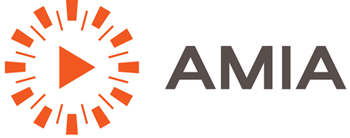2014 Conference Presentations
Speaker presentations are posted as they are received.
The 2014 program offered a daily stream of curated programming, you can click directly to those presentations ..
- The Open Source Digital Preservation and Access Stream focused on the use of open source software that is in current significant use within digital preservation and access systems. Curated in collaboration with AMIA’s Open Source Committee the stream covered larger issues such as when it does or does not make sense to take the open source approach, and how to navigate the complexities of copyright and licensing.
- Film in Transition Stream: As the portfolio of available film stocks continues to decline and film labs continue to close worldwide, this stream will discuss the concrete implications this evolution of the industry has for archives and long-term content managers.
- Global Exchange brought together voices from regions from around the world to share solutions and exchange ideas. Curated by AMIA’s International Outreach Committee, the emphasis was on exchange, innovation, and learning from colleagues near and far.
___________________________
 GE: International Film Production, Preservation, and Discovery: Two Stories
GE: International Film Production, Preservation, and Discovery: Two Stories
Richard Fauss, West Virginia State Archives
Karan Bali, Filmmaker
Tina Anckarman, National Library of Norway
Xinyu Dong, Center for East Asian Studies, University of Chicago
This panel will feature two tales of international discovery, cooperation, and film heritage. The first presentation brings together Indian filmmaker Karan Bali and the West Virginia State Archives to talk about the creation of Bali’s 2013 film, An American in Madras. The film tells the story and accomplishments of American Ellis Dungan and his influence on Indian Cinema in the Tamil Region from 1935 to 1950. The second presentation tells the story of how at the National film archive of Norway, seven reels of Pan Si Dong, an important Shanghai production, regarded as lost by Chinese archivists, was found in the late fall of 2011. The discovery shocked the archival world and made headline news on China’s biggest TV channels.
___________________________
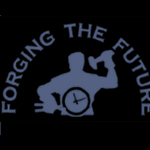 FiT: The Sustainability of Film Heritage within the Digital Economy
FiT: The Sustainability of Film Heritage within the Digital Economy
Luca Antoniazzi, University of Leeds
Asen O. Ivanov, University of Toronto
The technological and economic shift of the film industry is creating both opportunities and challenges for the film archiving sector, bringing about new issues to be discussed. Among them sustainability has emerged as an important topic in the context of the digital preservation of media collections. However, the majority of the publications dealing with this topic rarely make reference to film heritage and film cultures. Rather, they tend to focus on economic, organizational, and infrastructural factors. As a result, much current research has neglected crucial cultural issues pertaining to the sustainability of film collections. This panel will focus on the sustainability of both born-analogue and born-digital collections in the current economic, technological and cultural context. It will enrich the debate around that topic by bridging information science and cultural heritage studies perspectives. The main objective of the panel is to initiate a debate that could lead to a more complex and thoughtful definition of sustainability as a guiding principle of collections management.
___________________________
Play It Again: Creating a Playable History of Australasian Digital Games
Nick Richardson, Australian Centre for the Moving Image
The ‘Play It Again’ project is a collaboration between cultural and academic institutions to preserve the largely unknown histories of 1980s game development in Australia and New Zealand, ensuring that local titles are documented, collected, preserved and once again playable to the public. The project aims to reflect the emergence of a profession from a hobby, the strengths and differences of the local scene and demonstrate its importance to international discussions of gaming. This presentation outlines the successes of the project and also the challenges for one cultural institution embarking on a new field of collection and preservation.
___________________________
 Tracking Media Fragment Provenance & Derivatives With A Graph Database
Tracking Media Fragment Provenance & Derivatives With A Graph Database
Laurence Cook, metaCirque
Would you like the power to quickly trace provenance of any clip within a derivative or edit master file at the touch of a button? Or, in reverse, trace all access derivatives from an original source? Would you like to learn how your existing metadata resources and workflows can be leveraged to harness the power of social networking software, enabling you to quickly discover relationships between essence fragments within and/or across media libraries? A data model that opens doors to more intuitive visualizations? Attendees will be introduced to the metaCirque graph database model, which provides an open source solution for tracking media fragment provenance, derivatives, content ownership and access rights. The model is extensible, and extremely scalable. It is also schema and unique identifier regime agnostic, placing identification emphasis upon a media fragment’s context, rather than requiring adoption of a universal naming convention for data integration. Come, explore the future!
___________________________
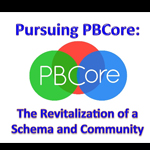 Pursuing PBCore: The Revitalization of a Schema and Community
Pursuing PBCore: The Revitalization of a Schema and Community
Casey E. Davis, WGBH Educational Foundation
Dave MacCarn, WGBH Educational Foundation
Jessica Bitely, Northeast Document Conservation Center
Jack Brighton, Illinois Public Media
John Passmore, WNYC
Mary Miller, Peabody Awards Collection Archivist
“PBCore is intended specifically for public broadcasters.” “Since we are not primarily an AV archive, PBCore is not relevant to our needs.” “PBCore is a little too intense for what we can handle.” “EAD is more appropriate for our AV collection.” Responses such as these flooded in after the PBCore Advisory Subcommittee launched its user and non-user survey this April. Conceived a decade ago, PBCore provides a simple and concise schema for organizing descriptive and technical metadata and sharing media items among and within organizations that deal with audiovisual materials. So why hasn’t PBCore been more widely adopted? Why are many media and archival organizations still unaware that PBCore exists? Why does it intimidate potential users? The panel will explore these questions and ask the audience for feedback on the most crucial question of them all: “What can we do to better serve the needs of PBCore’s intended community?” The work of AMIA’s PBCore Advisory Subcommittee will be discussed.
___________________________
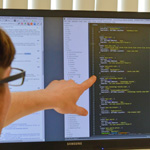 Open Source and Digital Preservation and Access: The First Digital Preservation Repository for Museum Collections: An Open Source Approach
Open Source and Digital Preservation and Access: The First Digital Preservation Repository for Museum Collections: An Open Source Approach
Ben Fino-Radin, The Museum of Modern Art
Kara Van Malssen, AVPreserve
Dan Gillean, Artefactual Systems
For three years, the Museum of Modern Art has worked to build the first digital repository designed to meet the needs and requirements of museum collections. This new system aims to facilitate digital collections care, management, and preservation for time-based media and born-digital artworks. Long-term viability and sustainability have been at the core of the design from the outset, extending to every aspect of the project – from the interdepartmental and interdisciplinary team of advisors at MoMA that steered the project, to the fundamental involvement of outside field experts, and the decision to leverage and adapt existing, open-source software. This presentation will offer a public demonstration of this new repository system, a discussion of the development process, and insights into decisions made during its design and implementation. Emphasis will be placed on the practical aspects of project management and the process of building such a system upon open-source frameworks.
___________________________
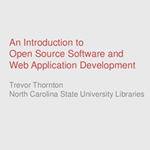 Open Source and Digital Preservation and Acces: Open Source Tools, Technologies and Considerations
Open Source and Digital Preservation and Acces: Open Source Tools, Technologies and Considerations
Trevor Thornton, North Carolina State University
Lauren Sorensen, Library of Congress
Software has become an integral component of digital preservation practice. Based on preservation principles as well as budgetary considerations, open source software has been embraced by the archival community. However, there is still a lack of clarity regarding the process and component parts that make up open source software projects. Trevor Thornton will present an introduction to open source development, with particular focus on developing web applications. He’ll discuss some fundamental open source concepts, provide an overview of technologies utilized in web application development, and offer important considerations for implementers at all levels. Lauren Sorensen will speak about Git and Github, providing an overview of its usefulness to developers, archives and other communities. She will focus on examining uses for Github and version control in an AV archives context, walk through Git and Github signup, review a script to demonstrate Github’s utilities, and relate these topics back to Thornton’s talk.
- Video Available
- Trevor Thornton presentation (via Slideshare)
- Lauren Sorensen presentation (via Slideshare)
___________________________
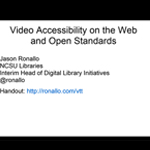 Open Source and Digital Preservation and Access: Video Accessibility on the Web and Open Standards
Open Source and Digital Preservation and Access: Video Accessibility on the Web and Open Standards
Jason Ronallo, North Carolina State University
Video on the Web presents new challenges and opportunities. How do you make your video more accessible to those with various disabilities and needs? This session will focus on writing captions, subtitles, descriptions, and timed metadata tracks for Web video using the WebVTT W3C standard. Encoding timed tracks in this way opens up opportunities for new functionality on your websites beyond accessibility. The presentation will show some examples of the potential for using these standards in creative ways.
___________________________
 Open Source and Digital Preservation and Access: One Body, Many Heads: Preservation and Access From Project Hydra
Open Source and Digital Preservation and Access: One Body, Many Heads: Preservation and Access From Project Hydra
Karen Cariani, WGBH
Jon Dunn, Indiana University Library
Stefan Elnabli, Northwestern University Library
Hannah Frost, Stanford University Libraries
Open source solutions to our challenges in audiovisual preservation and access not only include tools and software applications, but technological frameworks that constitute a foundation for innovation. One such framework is Project Hydra – an exciting collaboration of archivists, media-managers, and software developers who are building and using this community-sourced application framework to create new and open systems that manage, preserve, and provide access to digital audiovisual content. This panel will showcase Hydra-influenced open source projects and strategic planning from WGBH, Indiana University Library, Northwestern University Library, and Stanford University Library. From unique audiovisual preservation systems to cataloguing and access management solutions, representatives will discuss their projects, how their work meets the growing demands of audiovisual preservation and access, and their experiences in developing for the open source community.
- Video Available
- Stefan Enalbi presentation (via Slideshare)
- Jon Dunn presentation (via Slideshare)
- Hannah Frost presentation (PDF)
__________________________
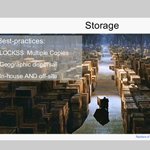 Digital Preservation for Technophobes on a Budget
Digital Preservation for Technophobes on a Budget
Susan Barrett, Arizona State University
Designed for participants who are unfamiliar with digital preservation, this session will present cost-effective strategies for digital asset management. Learn about digital formats, storage options and access models that can meet the needs of archives with limited budgets or technical expertise. You will begin development of a digital asset management plan using strategies that are flexible and responsive to the needs of your unique institution. Learn digital preservation best-practices, including metadata management and cataloging. Based on the Digital Moving Image Archives (DMIA) guide, participants will gain necessary knowledge to feel more competent and confident about digital asset management, managing digital accessions, and delivering educational outreach programs.
___________________________
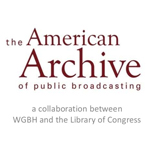 American Archive of Public Broadcasting: A Community of Public Media Builds an Archive
American Archive of Public Broadcasting: A Community of Public Media Builds an Archive
Karen Cariani, WGBH Educational Foundation
Lauren Sorensen, Library of Congress
Allison Smith, formerly of Wisconsin Public Radio
Nadia Ghasedi, Washington University Libraries
Casey Davis, WGBH Educational Foundation
On paper, the American Archive of Public Broadcasting is a collaboration between WGBH and the Library of Congress. In practice, it is a collaboration among public media institutions and collections nationwide. WGBH and LOC enable preservation and access by working to organize and sustain collections through the American Archive project that is active and engaged with the community at large. This panel will discuss future plans and vision for the collection’s growth and dissemination, progress on the ground regarding access, preservation and the collaborative model, as well as input from contributing stations and archives.
___________________________
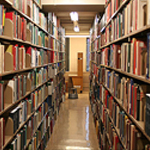 How Safe is Your Data – Examining Data Loss in an Archival Environment
How Safe is Your Data – Examining Data Loss in an Archival Environment
John Walko, Scene Savers
Barry Lunt, PhD, Brigham Young University
After you have digitized content from your collection, how do you know it is safe? As archivists, we’re taught to have three copies on three different type of media. But why does the media fail in the first place? Join us to gain an understanding of how data is stored, read back, and how data errors are detected and corrected. We’ll report on what causes drive failures and what you can do to ensure your data is safe.
Barry Lunt presentation
___________________________
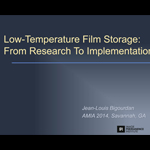 Film in Transition: What to do With All Those Stinky Films: Practical Guidelines for the Identifying, Managing and Freezing Films in Advanced Stages of Vinegar Syndrome
Film in Transition: What to do With All Those Stinky Films: Practical Guidelines for the Identifying, Managing and Freezing Films in Advanced Stages of Vinegar Syndrome
Rachael Stoeltje, Indiana University Libraries Moving Image Archive
Jean-Louis Bigourdan, Image Permanence Institute
Andy Uhrich, Indiana University Libraries Moving Image Archive
The panel combines scientific information on cold storage with the results of a real-world implementation of freezing films in advanced stages of acetate deterioration. The speakers will provide practical advice for collection managers dealing with “stinky” films worth saving. The Image Permanence Institute’s Jean-Louis Bigourdan will present on the science of vinegar syndrome and IPI’s tools for identifying and managing acetic acid deterioration in acetate film prints. The second part of the panel will be focused on a real life case of freezing a large quantity of deteriorated films at the Indiana University Libraries Moving Image Archive. Rachael Stoeltje will discuss the unintended creation of an acidic gas bomb that seriously corroded the $32,000 freezer. Andy Uhrich will follow up with how to properly freeze this material using step-by-step guidelines created by the National Parks Service.
___________________________
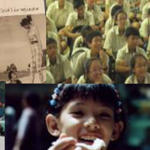
Global Exchange: Online, On the Road, and Inside the Classroom: Advocacy Campaigns in Southeast Asia and the Pacific
Irene Lim, National Archives of Singapore / SEAPAVAA
Sanchai Chotirosseranee, Film Archive Thailand
Karen Chan, Asian Film Archive
Mick Newnham, National Film and Sound Archive of Australia
Given that the audiovisual archiving movement is relatively young in Southeast Asia and the Pacific, advocacy is an integral part of the strategies and operations of institutions in the region to garner support, educate stakeholders, and promote their work. This session will examine some ingenious and engaging advocacy initiatives in the region including the Film Archive Thailand’s Film Rescue Van, the Asian Film Archive’s various educational programs, and the National Film and Sound Archive of Australia’s outreach services.
___________________________
 Global Exchange: Stop the Presses: Repatriating American Film Heritage Abroad
Global Exchange: Stop the Presses: Repatriating American Film Heritage Abroad
Gregory Lukow, Library of Congress
Giovanni Fossati, EYE Film Instituut Nederland
Louise McCrone, New Zealand Film Archive
Ray Edmondson, Archives Associates
Jeff Lambert, National Film Preservation Foundation
In March of 2014, the National Film Preservation Foundation and the EYE Film Institute made a public announcement regarding a partnership to repatriate and preserve American films found in the Netherlands, majority of which don’t exist or are only extant in inferior prints on US soil. The EYE approached NFPF after learning about the much publicized repatriation project between the latter and the New Zealand Film Archives in 2010. A similar project, though quite forgotten, was the repatriation of American films from Australia between the National Film and Sound Archives and a number of different US archives during the early 90s. This panel aims to discuss how such big repatriation projects between two countries are managed and more importantly shed light on what happens long after the press releases quiet down.
___________________________
 Global Exchange Poster: ORWO Region – Methodology of the National Film Heritage Digitization
Global Exchange Poster: ORWO Region – Methodology of the National Film Heritage Digitization
Miloslav Novak, Film and TV School of Academy of Performing Arts in Prague
Marek Jicha, Film and TV School of Academy of Performing Arts in Prague
In Central Europe, due to budgetary constraints and the inavailability of film stocks during certain time periods, a set of particular laboratory and creative techniques were applied whereby cinematographers shot films on Eastman Kodak negative, but all positive and some intermediate elements were printed on East German ORWO film stock. The stocks were not always compatible, and therefore the results between what was captured on the original camera negative and what was screened in theaters differed greatly. This poster presents the first research results of the National Film Fund Project (DF13P01OVV006) to optimize digital restoration workflow. This program is part of the Czech NAKI Programme. The next project,is a collaborative one that demonstrates Networking from Digitisation to Access (21220292) where are sharing best practices at work in Central European countries today. The goal of this researches is to determine the best way to digitally recreate the original theatrical screening experiences of these films and promote digitised regional film heritage.
___________________________
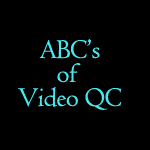 ABC’s of Video QC: Essential Steps in the Digitization Workflow
ABC’s of Video QC: Essential Steps in the Digitization Workflow
Kristin Lipska, California Audiovisual Preservation Project
Kimberly Tarr, New York University Libraries, Bobst Library
Kristin MacDonough, Bay Area Video Coalition
An increasing number of cultural heritage institutions are embarking on projects to preserve their analog video holdings yet lack the infrastructure and resources to conduct quality control (QC) on the resulting digital files. As a result, digital files with video and/or audio issues, or improperly named files, are accepted as preservation masters. We’ll demystify QC by explaining what resources are necessary to ensure that the files received are the deliverables requested. One presenter will highlight process and workflow; another will discuss the benefits of referencing the A/V Artifact Atlas, which offers visual examples of the technical issues and anomalies that can afflict audio and video signals. We’ll also share a new publication that assists organizations initiate, define, and manage video digitization projects with vendors. At the conclusion of this 60-minute session, attendees will have been introduced to resources and tools to help them develop their own QC practice.
___________________________
 State of the States: Evaluating US Regional AV
State of the States: Evaluating US Regional AV
Siobhan Hagan, University of Baltimore
Anne Wells, Chicago Film Archives
Lynette Stoudt, Georgia Historical Society
Many archives throughout the United States hold unique audiovisual materials within their collections. The content of these records typically document the region in which they originated and include materials such as local television, industrial films, oral histories, or home movies. Just as each geographic area in the country has different weather patterns, industry, and demographics, each region must rely on itself to preserve the majority of its moving image and recorded sound legacy. This panel will discuss where each state or region falls on the preservation spectrum, the factors that contribute to the region’s preservation environment, and how things may change for the better in order to avoid a catastrophic loss of recorded American culture. The findings presented will be gathered from a recent survey conducted by the Regional Audiovisual Archives Committee (RAVA) to identify the under-served regions of the nation and to gain assistance from the more successful models.
___________________________
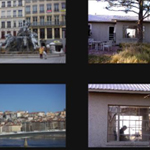 Capturing a Shadow: Digital Forensics Applications with Born-Digital Legacy Material
Capturing a Shadow: Digital Forensics Applications with Born-Digital Legacy Material
Julia Kim, National Digital Stewardship Resident/New York University Libraries
Elizabeth Roke, Emory Universtiy
Peter Chan, Stanford University
“Digital forensics” is a buzz phrase repeated often in the archival communities today, but what does it mean? How will it apply to the backlog of born digital materials? Through a brief overview of digital forensics frameworks and applications in archival workflows, as well as several case studies, audience members will understand how better to approach complex materials on hard drives, floppies, and optical media. They will come away with an understanding of some of the key steps in a digital forensics workflow, such as write blocking, disk imaging, and intellectual arrangement. By drawing on several contemporary case studies recently made available to researchers, audience members will be better equipped to approach complex works on these carrier mediums, traditionally relegated to the margins of our discipline, which go beyond moving images to include databases, emails, and even software programs.
___________________________
 Poster: BD-R Technology for Redundant Copies and International Standards for Long Term Archiving
Poster: BD-R Technology for Redundant Copies and International Standards for Long Term Archiving
Max Inui, JVC Advanced Media USA Inc
The challenges in long-term storage of digital data are: a) storage stability/safety; b) accessibility; and, c) migration capability and longevity. We see BD-R technology as a solution that is one of the most promising candidates, for redundancies, when compared to other media such as tape and HDD. The Poster is here.
___________________________
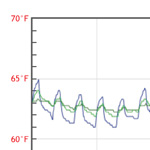 Poster: Research on Energy Saving Opportunities in Libraries and Archives
Poster: Research on Energy Saving Opportunities in Libraries and Archives
Christopher Cameron, Image Permanence Institute
The Image Permanence Institute (IPI) conducted a four-year investigation into mechanical system shutdowns in libraries and archives to successfully reduce energy consumption and implement sustainable practices in the operation of heating, ventilation, and air conditioning (HVAC) systems without incurring undue risks to collection materials. The results of the study showed that it is possible to use mechanical system shutdowns as an energy-saving measure in library collections spaces without sacrificing the quality of the preservation environment. The Poster is here.
___________________________
 Poster: The Lost Works of Fred Engelberg at The USC Hugh M. Hefner Moving Image Archive
Poster: The Lost Works of Fred Engelberg at The USC Hugh M. Hefner Moving Image Archive
Makin Kan, UCLA Moving Image Archive Studies
This research highlights the USC Hugh M. Hefner Moving Image Archive’s recent acquisition of the Fred Engelberg collection. That the late artist is virtually unknown is confounding and a feat of reclusiveness given the significant relationships represented by this collection across music, experimental and mainstream cinema, exhibiting a deep involvement in the Los Angeles sixties folk music scene as well as with BBS Productions, known for The Last Picture Show (1971).
___________________________
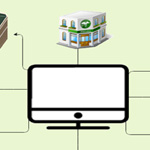 Poster: Database Solutions for Archival Institutions in Ghana
Poster: Database Solutions for Archival Institutions in Ghana
George Gyesaw, Institute of African Studies
Generally, archival institutions in Ghana house rich collections about the country’s cultural heritage, in the form of paper, photographs, sound and moving images. These collections can only be accessed by the collection managers since they are the only ones who have “intellectual control” about the contents of the collection. Most of these institutions practice ‘in-house’ cataloguing and are extinct from databases. Those who have passed the test are using databases which are not internationally recognized. These pose a lot of problems for the archive users like inability to know the contents of the archive from multiple locations, or do rapid search or retrieval about the contents for research, investigation etc.
Unlike the other archival institutions, the Institute of African Studies is in an exclusive position in the country since it has a well-established and a comprehensive database which is internationally recognized and is being hosted on the University’s server. This presentation focuses on how our existing database can be used as a model for similar institutions in the country; as well as the importance of databases in archival institutions. In this work, the process of identifying and installing the appropriate open source database application is being elaborated as the trends of usage of the internet have been linked with archival usage as to how online databases will attract the public to archival institutions. The study represents the value of archival institutions and its way forward to effective information sharing.
___________________________
 De-accession, Delete or Destroy: Removing Items from Collections
De-accession, Delete or Destroy: Removing Items from Collections
Deborah Stoiber, George Eastman House
Jennifer Jenkins, University of Arizona
Steve Wilson, Harry Ransom Center
De-accessioning is practiced to refine, enhance and strengthen an institution’s collections. Materials can be removed for a variety of reasons, but there are key factors that can make de-accessioning difficult. For an archivist, analyzing collections for possible removal can be daunting when curators, collection staff, administration and the public are reluctant to dispose of any materials and may not always understand the implications as well as the benefits of the de-accessioning process. In this session archivists from a wide range of archives and libraries will discuss their core values of how, why and when materials are removed, allowing attendees to get a comparative look at de-accessioning across a variety of institutions, including materials held by, state universities, private museums and foreign archives. Case studies from represented archives will be presented.
___________________________
 Digitizing Motion Picture Films: What are we Doing, and Why?
Digitizing Motion Picture Films: What are we Doing, and Why?
Greg Wilsbacher, USC Moving Image Research Collections
Jim Lindner, Media Matters LLC
Ken Weissman, Library of Congress
In the transition from the physical to the digital it is vital for us to ask what we are doing and why we are doing it. Why is this so important now? Motion Picture film is expensive to access as a physical media. Digitizing film carries with it handling costs that will make repeating this procedure difficult to justify. Thus, we should consider what we want to accomplish in the long term (measured in decades and centuries) when we handle, process and scan films. Currently, this conversation has been dominated by questions of format, codec, and asset management. But these aren’t the only questions we should be considering if we wish to preserve the history of motion picture film culture for future generations.
___________________________
 Click Capture, Press Play: Digitization Initiatives for Regional AV Collections
Click Capture, Press Play: Digitization Initiatives for Regional AV Collections
Rebecca Fraimow, Dance Heritage Coalition
Julia Kim, National Digital Stewardship Resident/New York University Libraries
Hannah Palin, University of Washington Libraries, Special Collections
Pamela Jean Vadakan, California Audiovisual Preservation Project
Archivists have been warning of the dangers to obsolete audiovisual materials for decades – and people are listening. Although most content holders are aware of the need for preservation, the lack of funding and resources for digitization present obstacles. In order to meet this need, new initiatives are developing partnerships with audiovisual preservation experts and online archives to provide access to at-risk audiovisual materials and make preservation available to all. This session will provide information about three Initiatives–California Audiovisual Preservation Project, Moving Image Preservation of Puget Sound, and New York’s XFR Collective. Each organization is at a different stage in the process and will focus on the current status of their initiative. We will examine questions of sustainability, creative options for funding, and other challenges, and also discuss how other archivists can form collaborations to continue the process of helping organizations and individuals preserve and make their materials accessible.
___________________________
An Update on AS-07: MXF Application Specification for Archiving and Preservation of Video
Chris Lacinak, AVPreserve
George Blood, George Blood Audio Video Film
James Snyder, Library of Congress
AS-07 is an MXF wrapper specification for the preservation and long-term archiving of audio-visual content. The effort to create the specification has been led by the Federal Agencies Digitization Guidelines Initiative (FADGI), and since 2013 has taken place under the auspices of the Advanced Media Workflow Association (AMWA). This effort has benefitted from the input and vetting of an international group of users, service providers and manufacturers. The result is a specification that has a high-level of correlation with Standards from SMPTE, ISO/IEC and EBU and thoroughly addresses the needs of archiving and preservation. The session will begin with an overview of wrappers to ensure a basic understanding of the topic before delving into a status update on AS-07 and its salient features. This will be followed by a detailed discussion on some of the more challenging elements addressed within AS-07, which make it particularly useful for archiving and preservation purposes.
